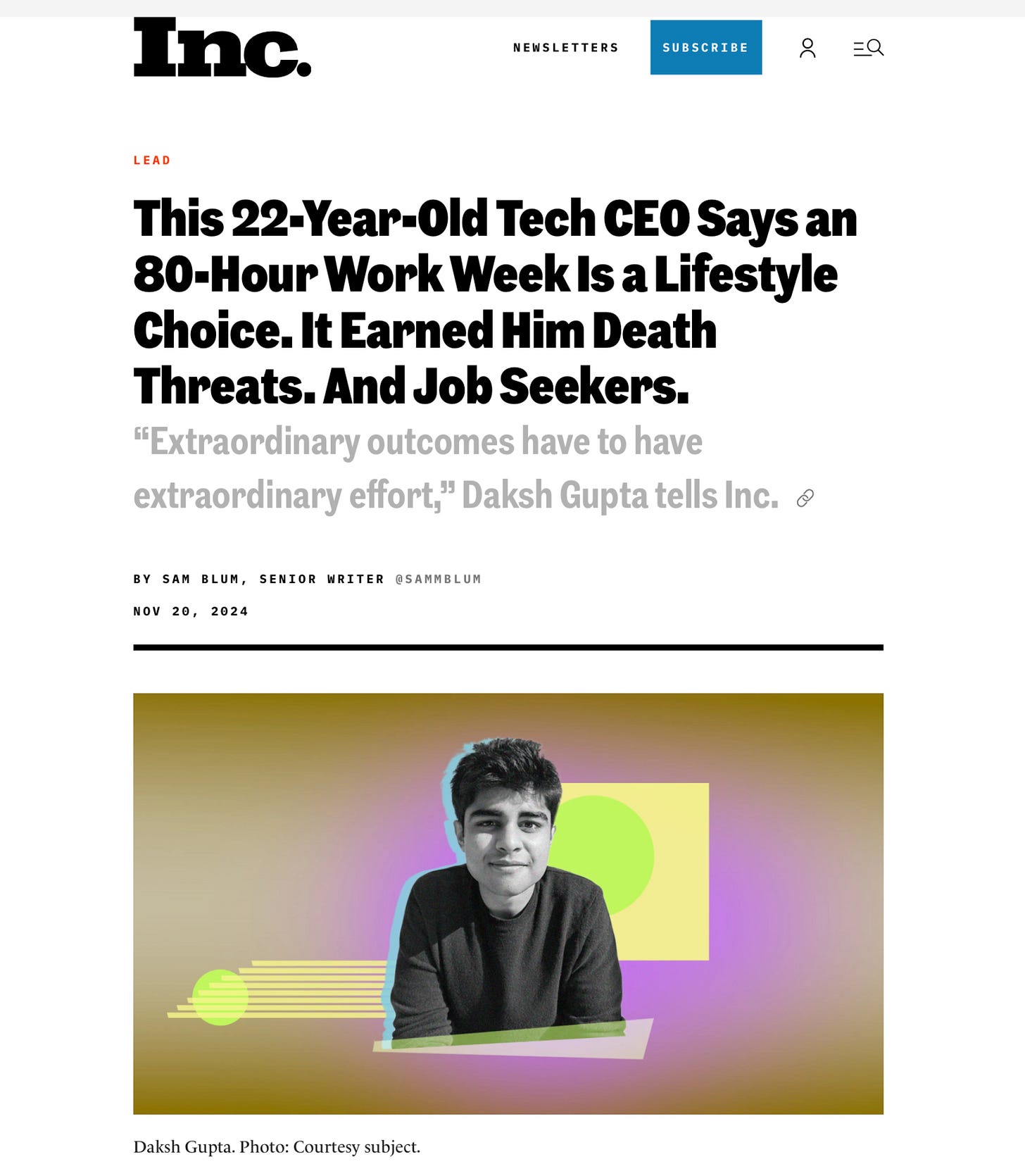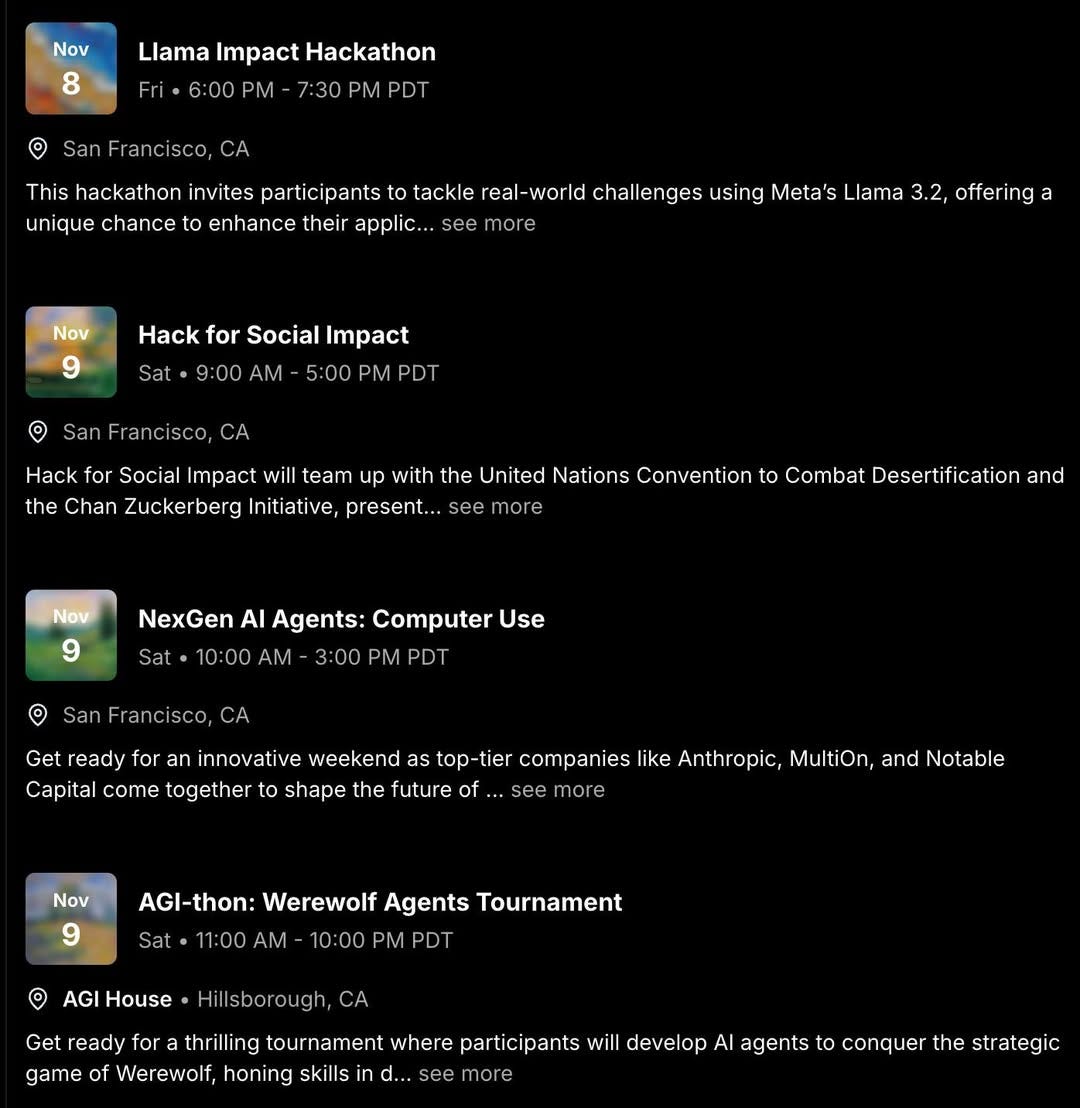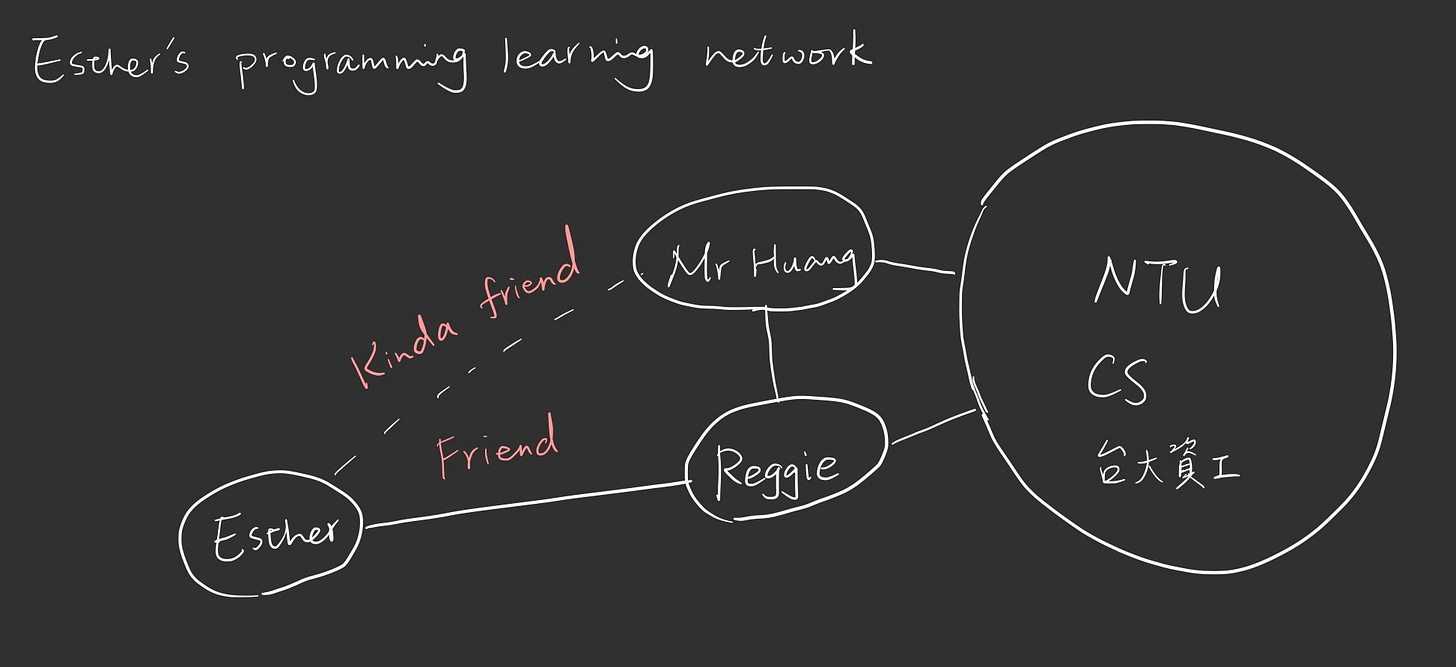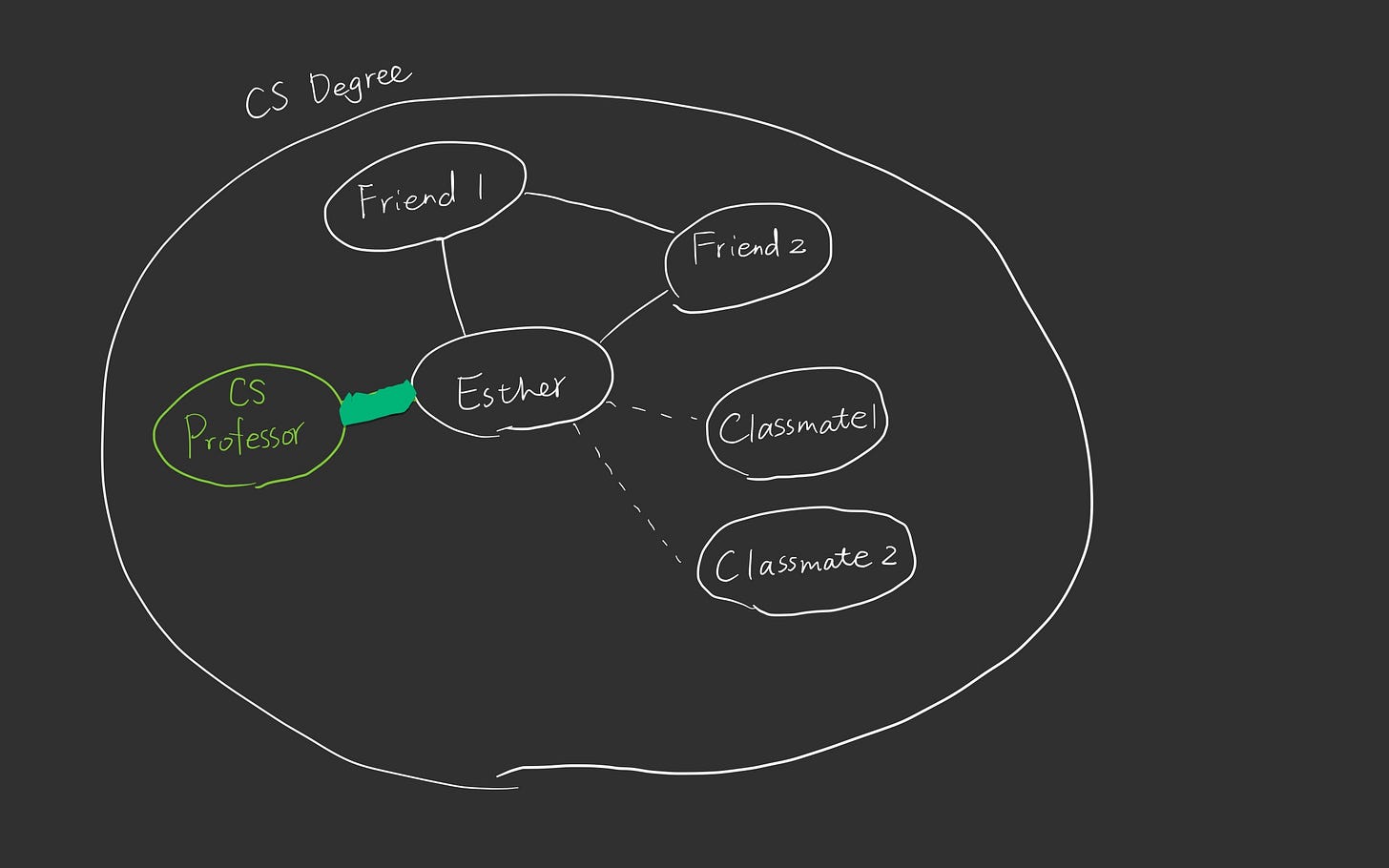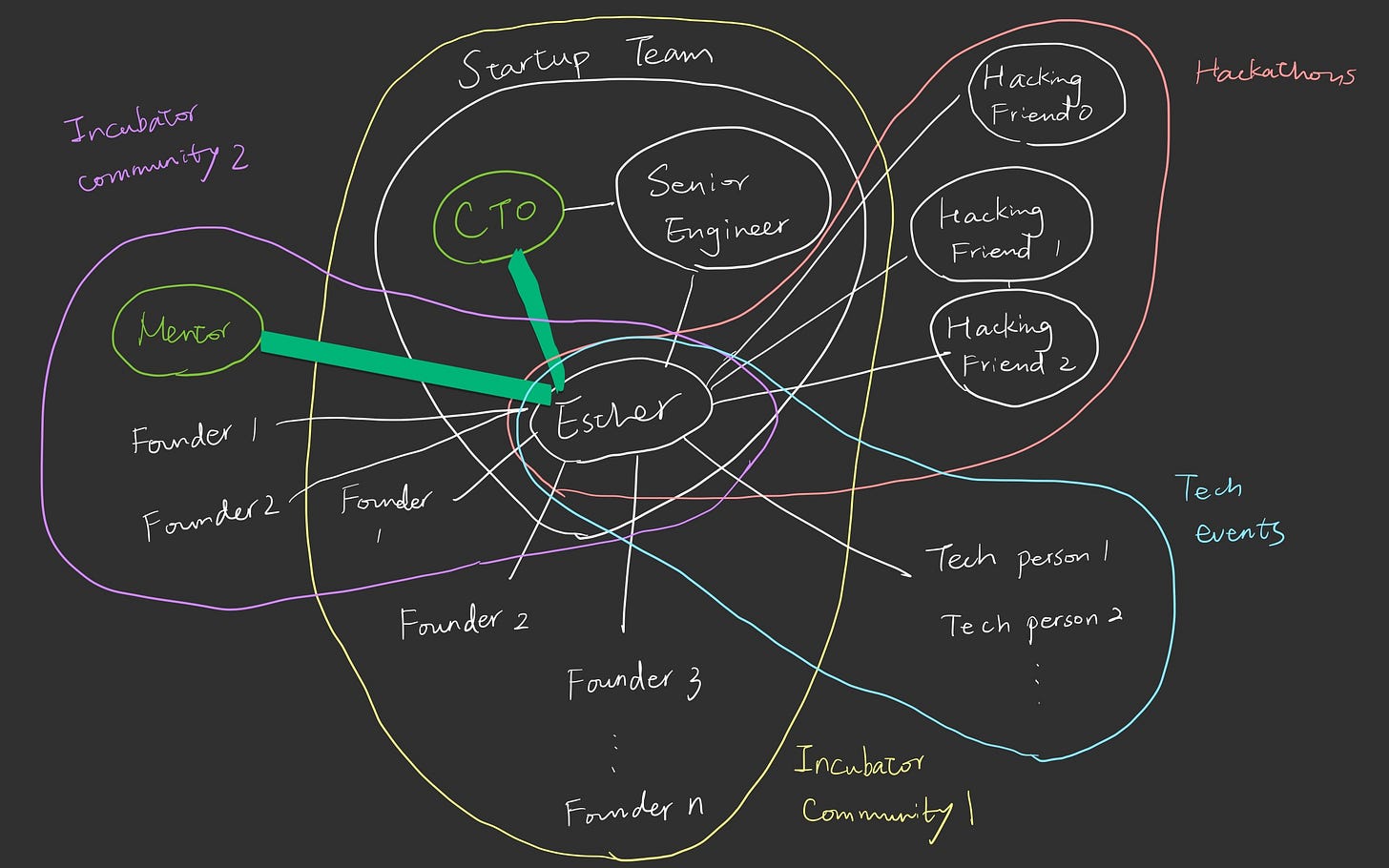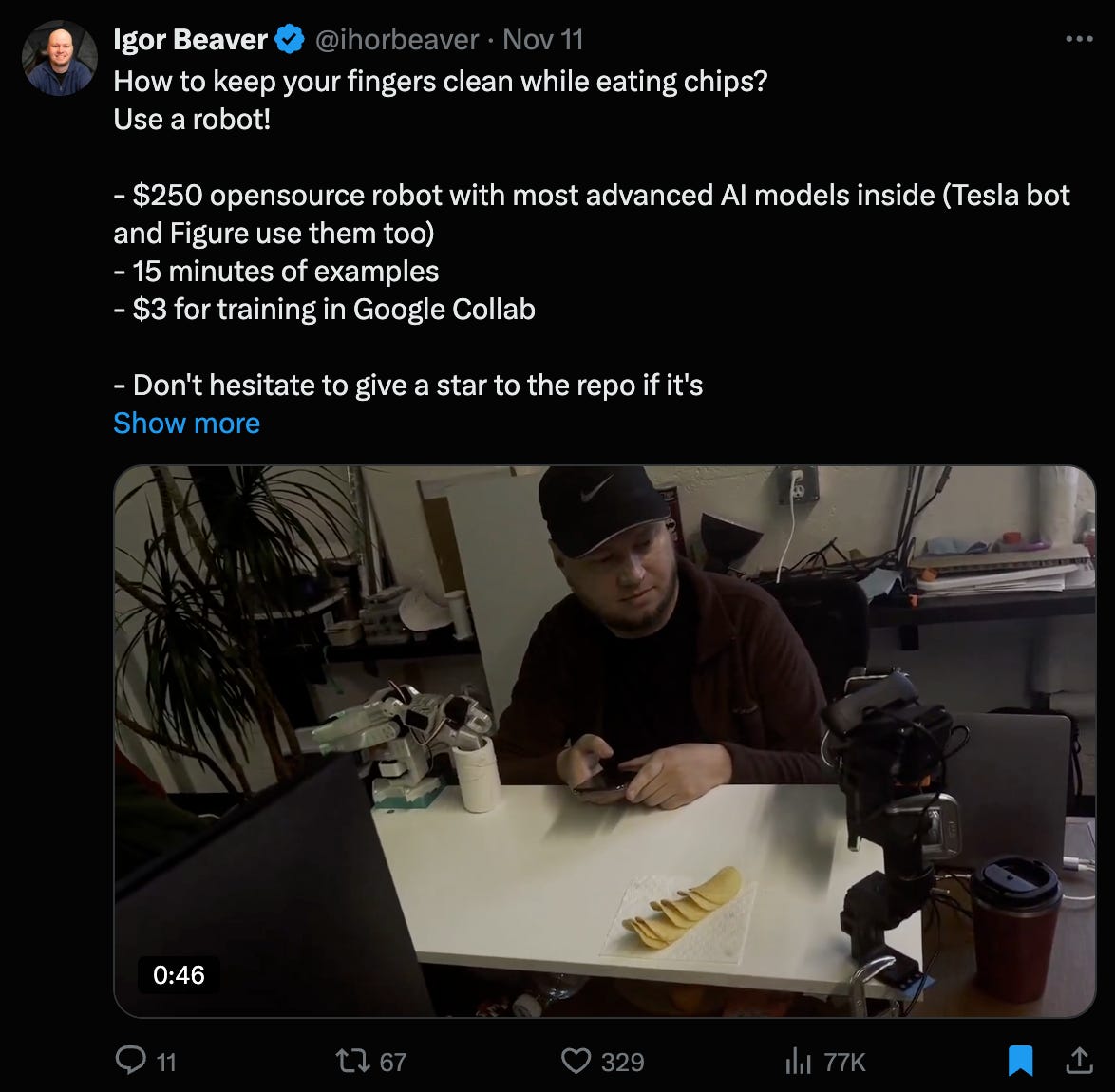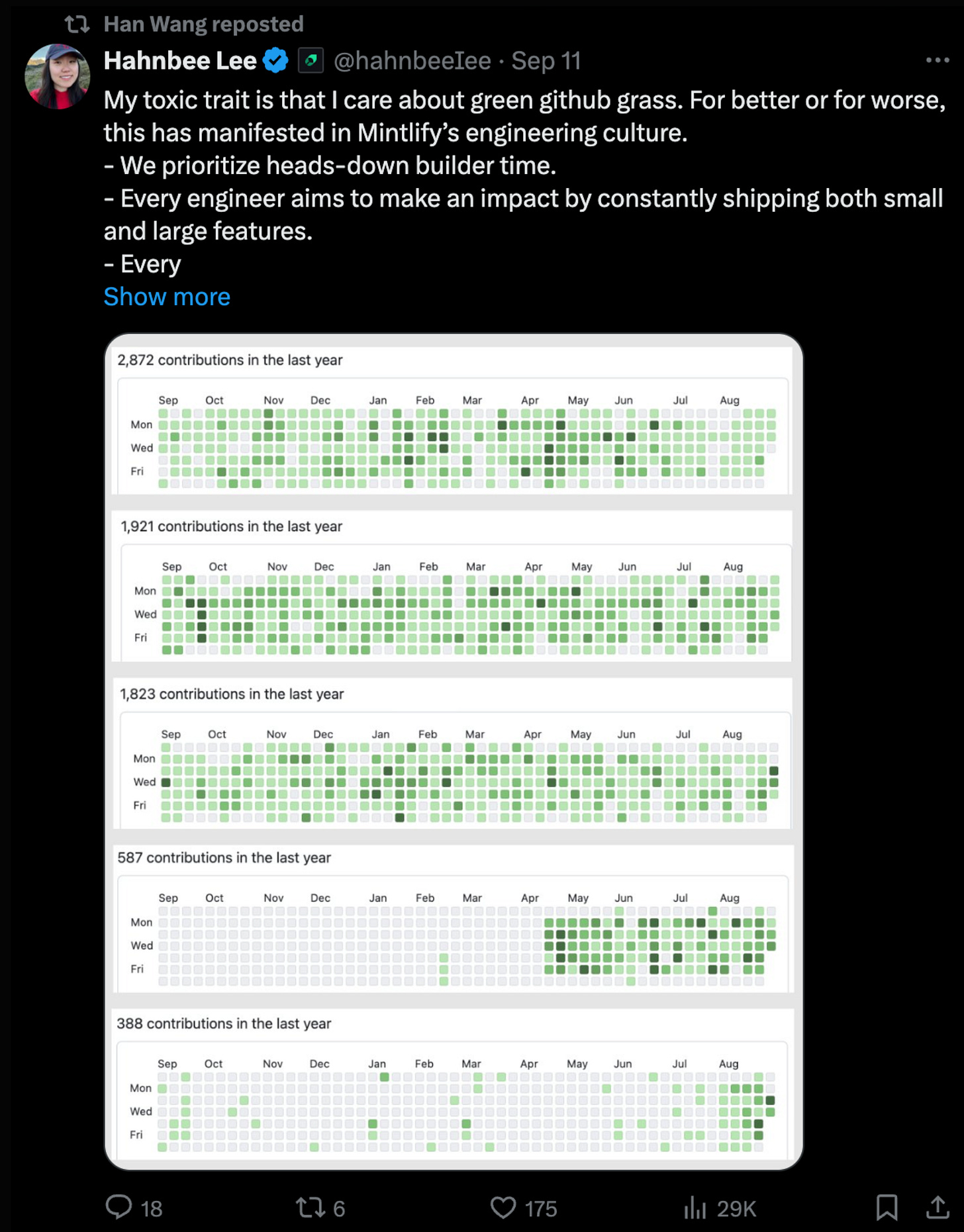If you want to be top-tier engineer, move to San Francisco
The learning that AI cannot replace
Why move when AI has lowered the barrier of getting into programing?
Since AI programming tools emerged, the barriers to learning how to code have drastically decreased. On platforms like X (formerly Twitter), there are now videos showing how even a 10-year-old child can write software. The advent of AI tools like Cursor has not only lowered the entry threshold for software engineering but also significantly enhanced the learning experience.
The founding team behind Cursor says they focus on user experience with the mantra “fun = speed,” and there is a reason behind it. The thrill of speed brought by AI comes not just from avoiding long hours stuck on a bug without any guidance, but also from not needing to spend time worrying about the nitty-gritty details of programming syntax. AI can understand the context based on the current codebase and write the necessary code using information from the same document. This thrill extends to the speed of code generation itself. For example, Cursor stores the entire codebase in a KV cache, so AI doesn’t have to rerun unchanged contexts. When you ask it a question, you don’t need to provide relevant code—it can search for it itself. As a result, AI can handle everything, from understanding the problem and learning a new language to executing and writing correct code.
In short, as long as the basic concepts are clear, you can collaborate with AI to make corrections. Typically, the more advanced AI handles the planning, while the more basic AI handles execution. Learning to code becomes an easier process of trial and error and iteration. Given this AI-powered era, what does it matter which city we live in?
San Francisco's Work, Work, Work Culture: Coding is Like Breathing
Aside from tech employees in big companies who care more about work-life balance, many in the tech community (especially startup folks) often make headlines due to their extreme workaholic mentality. However, even excluding the workaholic mentality, many people still have their own side projects.
So for them, there’s little difference between work hours and after hours. They code during work, then go to hackathons on weekends to keep coding. With so many hackathons happening every weekend, I have to choose one out of three, many of which are sponsored by big companies like OpenAI and Anthropic.
Even a home-based hackathon organized by enthusiasts can attract famous figures because San Francisco is full of talent. Once, I ran into Chip Nguyen, a well-known machine learning author, at one such event, and I became tongue-tied. You could think of him like the BTS of machine learning—meeting him at someone’s home felt like meeting a pop star and having your heart race.
You can imagine that in this lifestyle, coding becomes as habitual as eating and drinking, and it doesn’t feel like “work” anymore. After a year, writing code for me became like how TikTok is to modern society—a default part of life. Why this culture exists is something I’ll discuss below.
The City as My Private Tutor
If I assume you're not working at a startup, and instead, you're looking at programming from a learning perspective, it's easy to see why staying in San Francisco is far superior to being in school. I’ll explore why the speed of learning software engineering in San Francisco is unmatched anywhere else by looking at four community-driven learning environments: work, accelerators, hackathons, and tech events.
The Struggles of Learning Programming: Only Half a Teacher
Let me give you an example from my university days, when I wasn’t studying engineering but took an IT course. Honestly, I didn’t think I had much engineering talent—in fact, I had none. I learned nothing in a programming course at National Taiwan University aimed at business students. Later, I tried learning on my own four or five times, but each time I got stuck, I gave up.
The biggest challenge wasn’t just not understanding programming languages or engineering thinking—it was also struggling with poor English skills that made even basic research difficult. The teacher would always say, “If you don’t know, just Google it.” But I couldn’t even form a Google-searchable sentence.
The only learning channel I had was a friend named Reggie. But our relationship was informal—there was no clear learning path, and I wasn’t connected to anyone in the computer science field. Our sporadic learning wasn’t enough to keep my motivation high, and as a result, there wasn’t much progress.
Switching to a CS Major: Still Just One Community
You might wonder, what about studying in a computer science department? After all, joining a department provides a formal learning path and the chance to collaborate with classmates.
When I studied CS at Minerva, there was indeed a group of classmates and professors with a clear curriculum, set hours of study, and obligatory assignments. However, most of the learning was limited to classroom interactions or assignments. Professors were the primary source of knowledge, but you could only learn more deeply during office hours or after class. If I wanted to extend my learning, for example, expanding from basic algorithms to the algorithms behind Duolingo’s recommendations, I had to figure it out on my own. The learning network was limited—it was just one network, and my classmates’ skills were all about the same, meaning we often got stuck together.
San Francisco’s Learning Network: The Entire City is My Tutor
In San Francisco, the organic learning network is far superior to anywhere else. Let’s break it down into four categories: work environments, accelerators, hackathons, and tech events.
Work Environment: In startups, speed is key, which greatly accelerates the learning curve. But let’s assume you’re not working at a startup—there are still three other communities that can help.
Accelerator Environment: My company and former company were both part of startup communities. Essentially, these are accelerators that host many startups, and outsiders can join if they find a way in. Every day, besides learning from the company’s internal talent, you also learn from others in the accelerator. You might tinker with robots made by other companies, or more deeply collaborate on SEO strategies. The problems in software startups are generally similar, creating a strong network effect. Many engineers in the accelerator also want to start their own businesses. During a period of unemployment, I found an engineer who needed help—he became my personal tutor and helped me quickly learn front-end engineering in just a few weeks.
Hackathons: Even if you’re not working and can’t get into an accelerator, you can still go to hackathons. Every weekend in San Francisco, there’s a hackathon, and the people who show up are usually passionate coders and highly skilled engineers. Some familiar faces show up every weekend, and I got to know many of them and learned from them.
Tech Events: San Francisco probably hosts around 20 AI-related tech events every week. Some are demos where engineers show off their projects, while others are company events or lectures. Many outsiders attend large-scale events, but I believe these events are the least effective for learning—they don’t involve hands-on experience, and the discussions are too shallow. At most, you might meet a few people.
Most importantly, though AI can write a lot of code, but it cannot teach you how to think, debug, or understand the philosophy behind a programming language. These are insights only experienced engineers can share with you. For example, why is React’s state management so strange? It’s because most programming languages are imperative—you tell the program what to do step by step, but React is declarative—it doesn’t care about the steps in between, only the end results. These kinds of philosophical insights into coding are what make the craft feel like an art form, and they’re likely to be the most valued skills in the future.
The Network Effects of a Concentrated Talent Pool
Many people think about networking in terms of job opportunities, but in San Francisco, the network effect created by the concentration of engineering talent brings rapid learning. The phenomena I observe are:
X (formerly Twitter) has become a fast way to accumulate and filter learning resources and social capital.
Shipping code every day (ship everyday) is a badge of pride in San Francisco, and everyone has a side project.
This unique culture of coding every day leads to high expectations for learning and fast iteration. It’s hard to live in San Francisco and not become a top-tier engineer.
X: The Fast Lane for Accumulating Social Capital and Filtering Learning Resources
X, like LinkedIn for San Franciscans, is filled with videos of new tech products, papers, and performance discussions. If you’ve made a notable project, you can go viral overnight and attract investors. For example, when a friend first came to San Francisco, he had only four followers on X. But after a few months of posting about his robotic arms, his follower count skyrocketed. He started a company, and prominent investors were reaching out to him.
San Francisco’s dense talent pool makes it clear that you’re only a few steps away from top-tier tech people. If you know a few key players, you can quickly find anyone you need, get invited to exclusive events, or even Apple’s launch events. In other cities, you have to slowly climb the ranks, but in San Francisco, if you have talent, you’ll get an opportunity. This gives engineers strong learning motivation without the slow process of switching careers or waiting for someone to notice your project.
Shipping Code Every Day is a Badge of Pride for San Franciscans: Everyone Has Their Own Side Project
When talking about the power of community, one must also discuss the culture that the community fosters. In a place where engineers are highly concentrated and AI startups are growing explosively, the criteria for judging people on social media have shifted. It's no longer just about your job title, but about how much effort you’ve put into writing code. The speed at which you can go from writing code to shipping it, or how many days a week you code, has become a way to show off. Many people proudly display how green their GitHub is (how many commits they’ve pushed), and many startup job ads say: "If your GitHub is a sea of green, you’re the talent we’re looking for!" But in Taiwan, no one really cares about your GitHub!
In a city where everyone has an opportunity, shipping fast has become an identity, surpassing job titles and alma maters (since so many people here have dropped out of school). It's the absolute indicator of top-tier talent. While it might seem silly, the best engineers I’ve met, or the fastest-growing startups, all have GitHub profiles full of green. They encourage everyone to code every day, making it as natural as breathing. Now, I too code every day. If I don’t write code, something feels off.
Having a side project is also a byproduct of this culture. During the week, you code at work; on weekends, you continue coding at hackathons. Side projects aren’t just hobbies—they could very well become the next company. If you win a hackathon, you can get investment, an accelerator seat, or attract the attention of well-known tech figures on X. Many people might start using it, which is very different from the typical side project expectations where you build something for fun that no one cares about. Additionally, because hackathons are so frequent, the feedback loop for side projects is extremely short. You can also find others to collaborate with, which accelerates iteration speed and keeps the project moving forward. When you meet people, the greeting often becomes: “What are you building?”
So, if a learning environment values writing more code, where everyone’s main job is coding, their side hustle is coding, and the people around them are discussing code, you’ll find that any talent who arrives in San Francisco will immediately be filled with lines of code.
The Entertainment-Free, Focused Atmosphere of the City
Apart from the network effects, the inherent limitations of the city also help shape good engineers. Because San Francisco has very little entertainment, it’s essentially an engineer’s deserted island.
I don’t have much money, so there’s even less entertainment for me. Unlike Taiwan, where there are tons of great places to eat and things to do, San Francisco isn’t very safe to go out at night. You need to go out in groups, so it's not really possible to have a "night out." Once the sun goes down, most people stay home. Even if you want to explore fields outside of tech, like culture or art, there are few opportunities, and the quality is often lacking.
For example, I took a dance class once and asked my classmates what they were doing.
“I’m a systems engineer.”
“I’m a machine learning engineer.”
“I’m a junior engineer.”
Thank you—everyone was an engineer, engineer, engineer. I suspect the only person who wasn’t an engineer was the dance instructor. The downside is that my exploration outside of the tech field feels limited, but the upside is that there are fewer distractions, allowing for a highly focused atmosphere.
San Francisco's Disruption and Innovation
People often say that San Francisco is where new eras are born, while New York preserves the wealth of the old world. Although San Francisco is truly a city with little entertainment outside of technology, the destruction and innovation it embodies have a deep allure for me. In other cities, if you talk about disrupting the old system and creating the future, you’ll likely be mocked. But in San Francisco, I don’t feel alone anymore. Watching the robot arms at the next table, knowing Sam Altman is giving a talk in the building next door, attending a hackathon and meeting Andrew Ng, seeing so many people around me on Forbes' 30 Under 30—it makes me realize that the world’s top talent isn’t as out of reach as it might seem. I understand that being at the core of a generation steered by AI in my 20s—whether successful or not—this journey will undoubtedly be exciting.
So, if you want to become a top-tier engineer, move to San Francisco!


